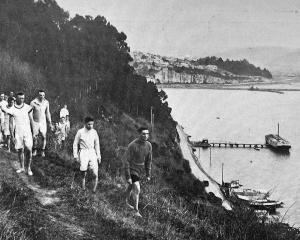
The illness is severe enough to occasion considerable incapacity for work and in the event of it spreading may cause disorganisation of local industry. Though it would be alarmist to state that the province is in imminent danger of an epidemic of virulent smallpox, some of the cases that have been seen are severe enough to necessitate immediate and active preventive measures. The constitutional disturbance, pocking, and after-effects on the general health produced on the patients are far greater than those due to simple vaccination. I am informed by my department that vaccination with calf lymph has proved valuable as a preventive in this disease. I urge the people generally, therefore, to seek vaccinations, not only for their own protection but to deter the spread of the disease. The following preventive measures have been adopted by the Public Health Department and the Otago Hospital Board: Patients are isolated, so also are all contacts who refuse vaccination. Vaccinated contacts are under observation for 18 days but are free to resume their ordinary occupations,with the exception of school children and staff, who are exempted for 18 days, and those engaged in the handling of foodstuffs. Contacts are restrained from frequenting public entertainments. The Otago Hospital Board is taking steps to provide extra isolation accommodation. I hope that the medical profession and the general public will ensure the immediate isolation in hospital of even mild cases of the disease, the vaccination of contacts, and the general adoption of these preventive measures. I would ask members of the general public to co-operate with the local authorities by informing the Public Health Department, Dunedin, should instances of the concealment of the disease or breach of the preventive measure adopted come to their knowledge.
Tomahawk’s Glencairn Hall opened
The official opening of the Glencairn Hall, Tomahawk, took place last night, when a very large audience assembled from the surrounding district and from the city, many people travelling out by tram, motor and lorry for the occasion. The ceremony was performed by the Mayor of Dunedin, Mr W. Begg. The band of the Fourth Regiment under Lieutenant George turned out for the occasion and contributed greatly to the success of the function. The Mayor, in the course of a short address, expressed the view that there was not the slightest doubt that the hall would fill a long felt want in the district and would be duly appreciated and made use of, not only by the Tomahawk residents but by the numerous weekenders visiting the locality.
Muddy marathon car trip
NZ Eltham settler, while in Auckland during the railway strike, was recalled owing to an accident to one of his children. He made the journey in his car, covering the distance in 23 hours. The weather had been very wet and the roads were very bad. Chains had to be used for about 170 miles, for in many parts the mud was up to the axle. On one of the big hills to be negotiated in the hinterland he passed two and on another hill three cars stuck in the mud. — ODT, 26.5.20.












